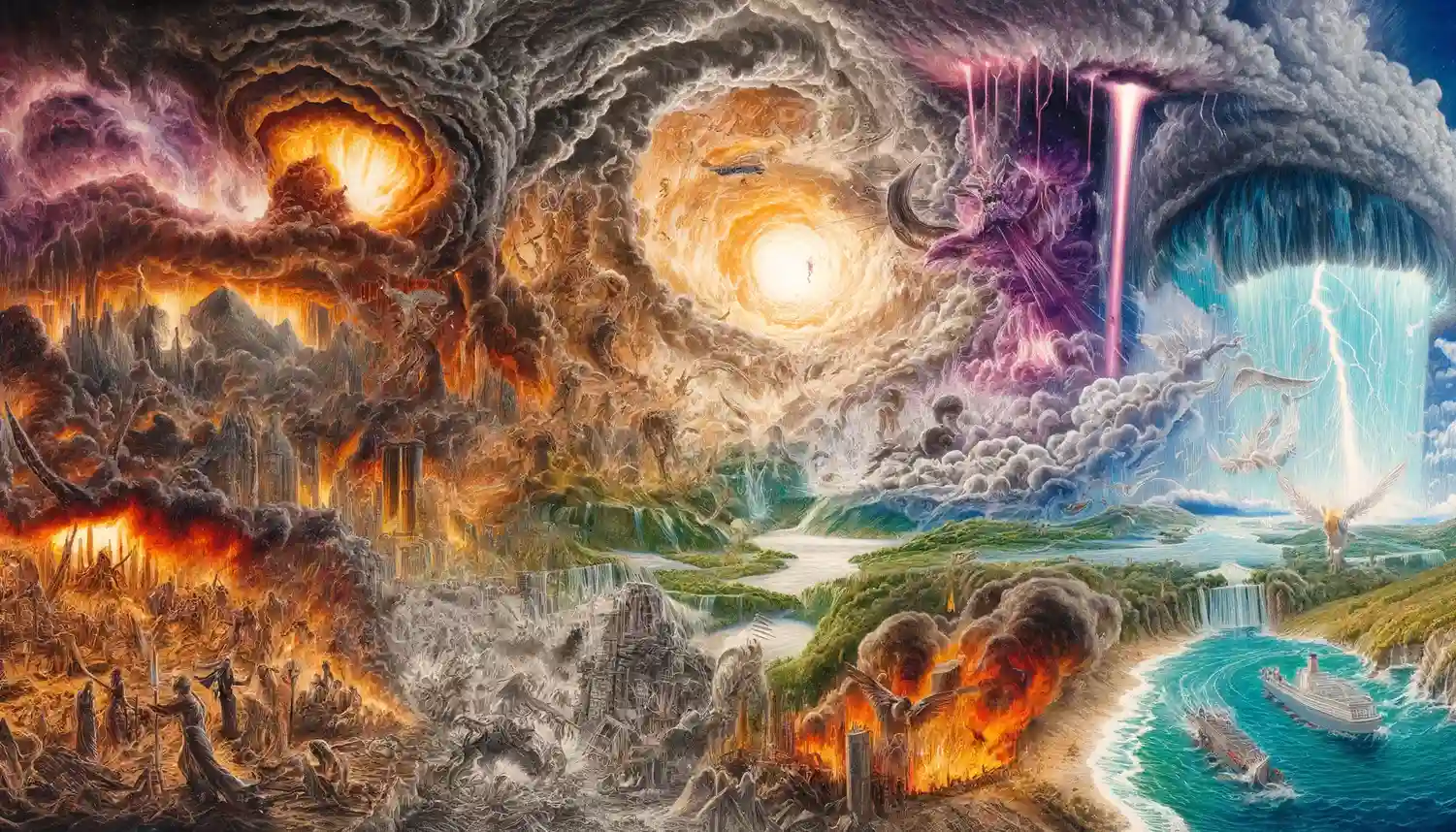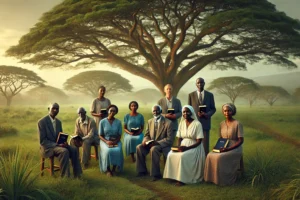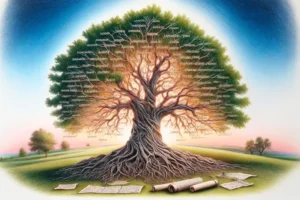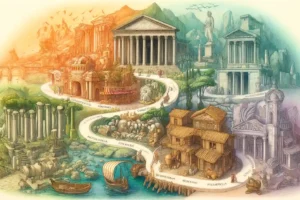
The Seven Seals, Trumpets, and Bowls of Wrath
Revelation 6-16, Seven Seals, Seven Trumpets, Seven Bowls of Wrath, divine judgment, apocalyptic literature, Book of Revelation, end times, Four Horsemen, cosmic disturbances, eschatological themes, divine justice, divine sovereignty, prophetic fulfillment, theological interpretation, biblical symbolism
The Seven Seals, Trumpets, and Bowls of Wrath described in the Book of Revelation, chapters 6 through 16, are a series of prophetic visions that depict the judgment and wrath of God being poured out upon the earth in the end times. Here are some quick facts about these three series of judgments:
- The Seven Seals (Revelation 6-8:1): These seals are opened by Jesus, referred to as the Lamb. Each seal triggers events or judgments on earth, including war, famine, death, and the martyrdom of the saints. The opening of the seventh seal introduces the seven trumpets.
- The Seven Trumpets (Revelation 8-11): The trumpets are sounded by seven angels, causing further catastrophic events affecting the earth, sea, freshwater, and celestial bodies. These include a series of natural and supernatural disasters like hail and fire, a mountain thrown into the sea, waters turning bitter, and widespread darkness.
- The Seven Bowls of Wrath (Revelation 15-16): These bowls are poured out by another set of seven angels, unleashing the full wrath of God. The judgments include painful sores, the sea turning to blood, scorching heat, darkness, and the preparation for the final battle at Armageddon.
- Symbolic Significance: Each series of judgments is more severe than the last, symbolizing the escalating intensity of God’s wrath against unrepentant sinners and the forces of evil.
- Eschatological Themes: These events are central to the eschatological (end times) narrative of Revelation, showcasing the final confrontation between divine forces and evil.
- Purpose of the Judgments: The judgments serve to punish evil, bring about repentance among humanity, and demonstrate God’s sovereignty and justice.
- Interpretative Variations: Interpretations of these visions vary widely among scholars and theologians, ranging from historical and symbolic to futurist views, reflecting different understandings of the Book of Revelation’s timeline and real-world correspondences.
The Seven Seals, Trumpets, and Bowls of Wrath, as described in the Book of Revelation (chapters 6-16), represent a climactic sequence of judgments that unfold in the apocalyptic literature of the New Testament. These series of events are marked by intense symbolism and vivid imagery, depicting the final confrontation between the forces of good and evil and the ultimate vindication of God’s justice. Here is a detailed analysis of each series:
The Seven Seals (Revelation 6-8:1)
- Symbolic Opening: The seals are opened by Jesus, referred to as the Lamb, symbolizing His authority to execute God’s plan for the end times.
- Sequential Judgments: Each seal reveals a judgment or a symbolic event:
- The first four seals release the Four Horsemen, symbolizing conquest, war, famine, and death.
- The fifth seal reveals the souls of martyrs, crying out for divine justice.
- The sixth seal brings cosmic disturbances, such as earthquakes and darkened skies.
- The seventh seal introduces a period of silence in heaven, followed by the seven trumpets, signaling a deepening of God’s judgment.
The Seven Trumpets (Revelation 8-11)
- Escalation of Disasters: The trumpets are sounded by seven angels, each unleashing a specific disaster:
- The first trumpet causes hail and fire, destroying vegetation.
- The second turns the sea to blood, killing marine life.
- The third affects freshwater sources, turning them bitter.
- The fourth impacts celestial bodies, affecting light on Earth.
- The fifth and sixth trumpets (often called “woes”) release demonic forces that torment and kill.
- The seventh trumpet signals the final victory of God’s kingdom, leading to celebrations in heaven and further judgments on earth.
The Seven Bowls of Wrath (Revelation 15-16)
- Complete Unleashing of Wrath: The bowls represent the culmination of God’s wrath:
- The first bowl causes grievous sores on those who bear the mark of the beast.
- The second and third bowls turn all bodies of water to blood.
- The fourth bowl intensifies the sun’s heat.
- The fifth bowl plunges the kingdom of the beast into darkness.
- The sixth bowl dries up the Euphrates River, preparing the way for the kings from the East and setting the stage for the battle of Armageddon.
- The seventh bowl results in a massive earthquake and huge hailstones, symbolizing the final act of destruction before the ultimate victory of good over evil.
Theological and Interpretive Themes
- Divine Justice and Mercy: These judgments reflect both aspects of God’s character: His justice in punishing evil and His mercy in calling people to repentance.
- Symbolic Interpretation: The symbols used (e.g., beasts, horns, bowls) are rich with Old Testament imagery and are interpreted differently across various theological perspectives, including Preterist (historical fulfillment), Futurist (prophetic fulfillment), and Idealist (timeless spiritual truths).
- Eschatological Urgency: These visions convey an urgency regarding the end times, intended to motivate the faithful to perseverance and moral vigilance in the face of persecution and tribulation.
Conclusion
The sequence of the Seals, Trumpets, and Bowls of Wrath in Revelation forms a complex narrative structure that intertwines themes of judgment, salvation, and the sovereignty of God. This narrative invites believers to reflect on the nature of divine justice, the reality of evil, and the hope of redemption, emphasizing the cosmic scale of God’s plan for humanity’s ultimate deliverance from sin and death.



